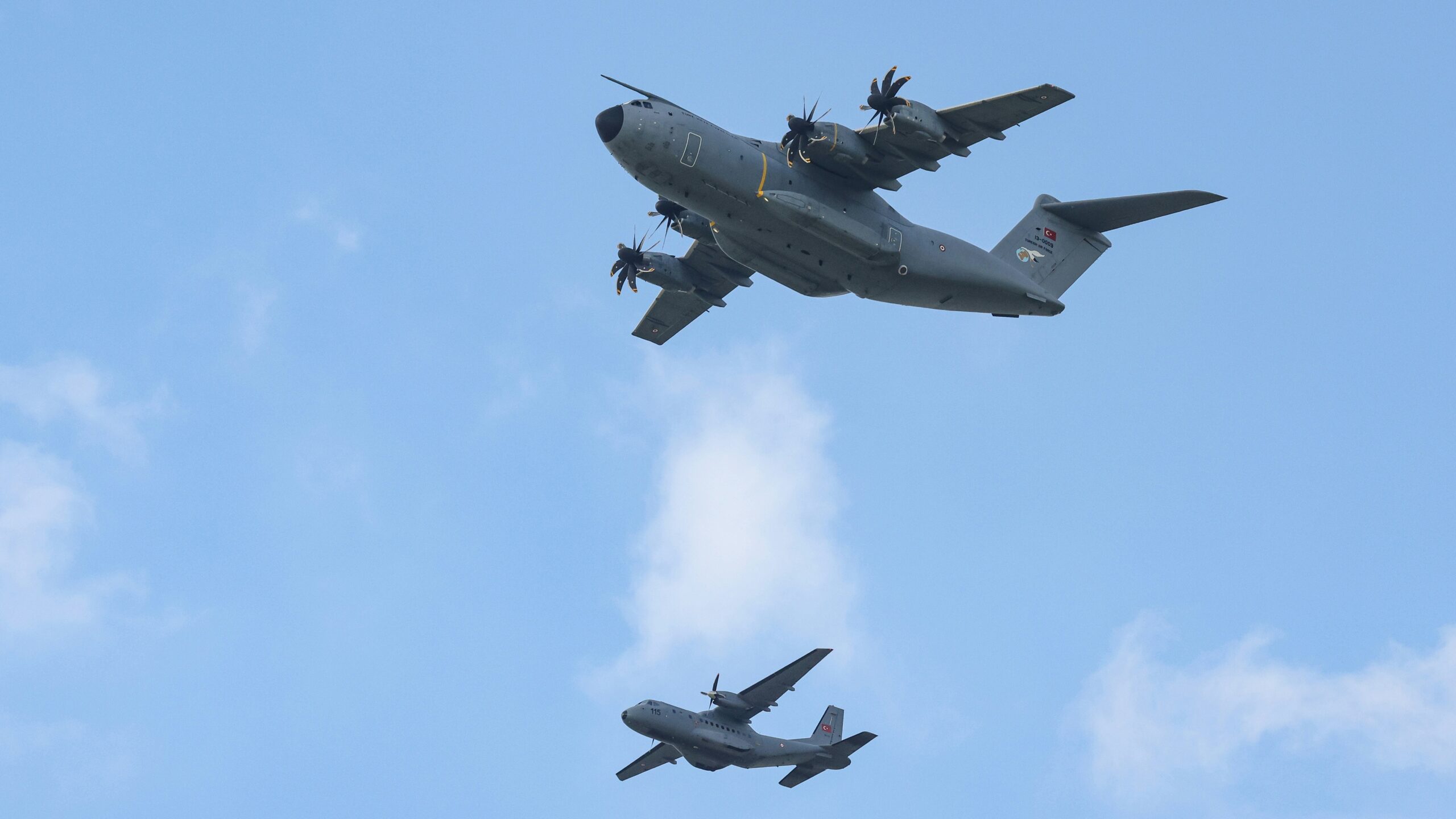“`html
Introduction
Recent developments in the Middle East have once again brought attention to the long-standing conflict between Israel and Hezbollah. The latest incident involves a series of military operations initiated by Israel, targeting Hezbollah positions along the Lebanese border. This escalation was triggered by a complex web of incidents, including clashes at various checkpoints, missile firings, and intelligence reports suggesting increased militant activity. These events have not only heightened tensions in the region but also raised significant concerns about a potential broader conflict.
On the ground, the situation has been particularly volatile. Israeli forces have conducted airstrikes and artillery bombardments, claiming these actions are in response to threats posed by Hezbollah. Reports from the area suggest damage to infrastructure and civilian areas, further complicating the already fragile humanitarian situation. Meanwhile, Hezbollah has issued statements condemning the attacks and vowing retaliation, thereby fuelling a cycle of violence that risks spiraling out of control.
The international community watches these developments with apprehension, aware of the broader implications for regional stability. Diplomatic efforts are underway to de-escalate the situation, but with both sides entrenched in their positions, resolution seems elusive. This introduction sets the stage for a deeper analysis of the conflict, examining the motivations behind the actions of Israel and Hezbollah, the humanitarian impact of their confrontation, and the potential pathways to achieve a lasting peace.
Historical Context of Israel-Hezbollah Relations
The relationship between Israel and Hezbollah has been marked by decades of conflict and intermittent violence, rooted in territorial disputes and deep-seated ideological differences. Established in 1985, Hezbollah emerged against the backdrop of the Lebanese Civil War and the subsequent Israeli occupation of southern Lebanon. Initially framed as a resistance movement, Hezbollah’s primary objective was to expel Israeli forces from Lebanese territory, leading to numerous skirmishes and full-scale military confrontations.
One of the earliest and most significant clashes occurred in 1993 during Operation Accountability, when Israel launched extensive air and artillery strikes on Hezbollah positions in southern Lebanon. This was followed by Operation Grapes of Wrath in 1996, another intensive campaign aimed at curbing Hezbollah’s capability to launch rocket attacks into northern Israel. Despite these operations, Hezbollah grew in strength, gaining both military prowess and political influence within Lebanon.
The 2006 Lebanon War marked a critical juncture in the Israel-Hezbollah conflict. Sparked by a cross-border raid in which Hezbollah killed eight Israeli soldiers and kidnapped two more, the war saw a massive Israeli military response that devastated large swathes of Lebanese infrastructure. Over a month of fierce fighting resulted in significant casualties on both sides, with extensive damage to Lebanese civilian areas drawing international condemnation. The war ended with a United Nations-mediated ceasefire, though the underlying tensions and hostilities remained unresolved.
Since the 2006 war, intermittent clashes and escalations have continued to punctuate Israel-Hezbollah relations. Hezbollah’s expanding missile arsenal and growing involvement in regional conflicts, particularly in Syria, have added layers of complexity to the security dynamics. The historical grievances, compounded by mutual distrust and strategic rivalries, perpetuate a cycle of provocation and retaliation that periodically flares into military confrontations. This enduring conflict has not only shaped the geopolitical landscape of the Middle East but also continues to pose significant risks to regional stability.
Details of Recent Attacks
In a series of escalating confrontations, Israel launched targeted attacks on Hezbollah positions on the evening of October 3rd, 2023. These operations were primarily concentrated in the southern region of Lebanon, an area known for its strategic importance to Hezbollah’s military infrastructure. The pre-dawn strikes mainly targeted suspected missile storage facilities, command centers, and communication hubs linked to Hezbollah’s operational capabilities.
Local sources indicated that the attacks resulted in significant destruction of these facilities, though casualties have yet to be confirmed. Reports suggest that the bombing raids were swift and precise, employing a combination of fighter jets and precision-guided munitions. This method of engagement underscores the advanced military technology at Israel’s disposal and their capability for targeted, high-impact strikes.
The Israeli Defense Forces (IDF) have asserted that these actions were imperative for national security, following increased intelligence reports of mounting threats from Hezbollah across the Lebanese border. In an official statement, Defense Minister Benny Gantz emphasized that the operations were defensive measures aimed at neutralizing imminent threats, echoing Israel’s long-standing policy of preemptive self-defense.
Moreover, IDF Spokesperson Brigadier General Hidai Zilberman reinforced this stance, labeling the recent assaults as crucial deterrence efforts to subdue potential aggressors in the volatile region. According to Zilberman, continuous surveillance had identified specific sites where Hezbollah was allegedly consolidating force, mandating prompt military intervention.
The Israeli government’s hardline response has garnered varied reactions globally, with some nations calling for restraint while others back Israel’s sovereign right to defend itself. On the ground in Lebanon, Hezbollah officials have yet to release a comprehensive statement, though preliminary reports suggest a potential surge in retaliatory rhetoric amid the mounting tension.
Hezbollah’s Response
In the wake of the recent Israeli attacks, Hezbollah has demonstrated a multifaceted response, blending both military and diplomatic strategies. Militarily, Hezbollah has mobilized its forces along the southern Lebanese border, conducting missile launches and artillery fire targeting specific Israeli posts. This aggressive stance has been articulated through various media outlets affiliated with the organization, underscoring its intent to retaliate. Furthermore, Hezbollah’s military wing has issued statements asserting their preparedness for an extended conflict, underlining their capability to engage in a prolonged military campaign.
On the diplomatic front, Hezbollah leaders, particularly Hassan Nasrallah, have delivered speeches underscoring their resolve to defend their territory and people. Nasrallah emphasized that any escalation from Israel would be met with proportional retaliation, warning both regional and international actors of the broader implications of continued hostilities. These declarations resonate with Hezbollah’s historical narrative of resistance, aimed at galvanizing both domestic and international support.
These responses have had an immediate and complex impact on regional stability. The bolstering of Hezbollah’s military posture has heightened tensions along the Lebanese-Israeli border, prompting concerns over a full-scale confrontation. Diplomatically, Nasrallah’s statements have amplified calls for international mediation, seeking to prevent further deterioration of the situation. The risk of further retaliation looms large, with Hezbollah indicating that they hold several strategic options to escalate the conflict if provoked.
The combination of military readiness and diplomatic rhetoric from Hezbollah illustrates a strategic approach aimed at both demonstrating strength and appealing to broader geopolitical frameworks. The volatile dynamic between military actions and diplomatic maneuvers continues to hold significant implications for the region’s precarious stability.
Regional Repercussions
The recent Israeli attacks on Hezbollah targets have reverberated across the Middle Eastern region, generating a multitude of reactions from neighboring countries and key regional players. Syria, Iran, and Lebanon find themselves at the crux of this burgeoning tension, each shaping and being shaped by the unfolding events.
Firstly, Syria’s involvement is paramount given its historical support for Hezbollah and its alliance with Iran. The Syrian government, embroiled in its own multifaceted conflict, perceives these Israeli actions not only as a threat to Hezbollah but also as an indirect destabilization of its sovereignty. The Assad regime might leverage these tensions to rally domestic support, further entrenching its alliance with Hezbollah and Iran. This dynamic could foster a more hostile environment, elevating prospects for future military confrontations.
Iran’s strategic calculus is intricately linked to its support for Hezbollah and regional hegemony ambitions. As a principal patron of Hezbollah, Iran’s response is crucial. The Israeli strikes can be interpreted as a challenge to Iran’s influence in Lebanon and Syria, potentially eliciting a calculated escalation from Tehran. Such a response might take the form of increased military aid to Hezbollah or rhetorical condemnations against Israel, heightening the risk of broader regional conflict.
Lebanon stands at the epicenter of these tensions. Hezbollah’s role within the country, coupled with the Israeli attacks, exacerbates Lebanon’s precarious political and economic situation. The Lebanese government faces the daunting task of balancing internal stability with external pressures. Any miscalculated response could plunge Lebanon into deeper turmoil, further complicating the geopolitical landscape.
Lastly, broader Middle Eastern reactions underscore the volatility of the situation. Various states, from Gulf nations to North African countries, are closely monitoring the developments. Their responses, ranging from diplomatic engagements to security alignments, can either mitigate or intensify the prospects for escalation.
In sum, the Israeli-Hezbollah skirmishes have catalyzed a complex interplay of regional dynamics. The responses of Syria, Iran, and Lebanon, alongside the broader Middle Eastern specter, will significantly dictate the trajectory of this fraught situation, with potential ramifications for regional peace and stability.
International Reactions
The recent escalation between Israel and Hezbollah has provoked a broad spectrum of reactions from the international community. Major countries and international organizations have expressed a mixture of concern and calls for restraint, reflecting the precarious nature of the situation in the Middle East. The United Nations, through its Secretary-General, has urged all parties involved to exercise maximum restraint and avoid actions that could exacerbate the conflict. The UN has emphasized the need for a diplomatic resolution, underscoring its commitment to regional stability.
The United States, a key ally of Israel, has reiterated its support for Israel’s right to self-defense while urging both sides to seek peaceful solutions. High-ranking officials from the State Department have engaged in diplomatic dialogues with their counterparts in the region, emphasizing the importance of de-escalation and the pursuit of sustainable peace. Similarly, the European Union has called for immediate cessation of hostilities, urging both Israel and Hezbollah to engage in dialogue. The EU’s foreign policy chief has highlighted the risk of broader regional instability, calling for concerted international efforts to mediate the conflict.
Russia and China have also voiced their concerns, calling for calm and cautioning against actions that could lead to further violence. Russian diplomats have offered to mediate talks between the conflicting parties, reflecting Russia’s growing role in Middle Eastern affairs. China’s Foreign Ministry has similarly advocated for a constructive approach, emphasizing dialogue and negotiated solutions while condemning acts of violence from both sides.
Regional organizations like the Arab League have echoed these sentiments, with member states issuing statements that criticize the escalation while calling for an urgent and peaceful resolution to the tensions. The League has proposed an emergency meeting to discuss the situation and formulate a collective response. Clearly, the international community is keenly aware of the high stakes involved, and there is a unified call for immediate de-escalation and a return to diplomatic channels.
Implications for Global Security
The escalating conflict between Israel and Hezbollah carries significant ramifications for global security, potentially reverberating across various geopolitical and economic domains. One of the most immediate concerns pertains to the stability of global oil markets. The Middle East is a critical region for oil production and export, and any outbreak of hostilities could disrupt supply chains, leading to heightened oil prices and economic instability worldwide. Investors and nations heavily reliant on Middle Eastern oil are closely monitoring developments, apprehensive of potential supply shocks and their cascading economic impacts.
Furthermore, the possibility of broader regional instability looms large. The Middle East is already a volatile region, with multiple state and non-state actors vying for influence. An intensification of hostilities between Israel and Hezbollah could exacerbate existing tensions, potentially drawing in neighboring countries and proxy forces, thereby creating a more complex and unpredictable security environment. Nations such as Iran and Syria, known backers of Hezbollah, might feel compelled to respond, risking a regional conflagration that could have devastating humanitarian and security consequences.
At a global level, the conflict poses a serious challenge to international counterterrorism efforts. Hezbollah is designated a terrorist organization by several countries, including the United States and members of the European Union. An active conflict heightens the potential for terrorist activities, not only in the region but also globally, as groups affiliated with or sympathetic to Hezbollah might seek to exploit the situation to launch attacks. This necessitates a heightened state of vigilance and international cooperation to preclude potential threats to global security.
The ramifications of the Israel-Hezbollah conflict are multifaceted and pose significant challenges to global stability. Addressing these challenges requires concerted diplomatic efforts, robust economic planning, and comprehensive security strategies to mitigate the risks associated with this escalating geopolitical crisis.
Conclusion and Possible Future Scenarios
The recent escalation between Israel and Hezbollah has undeniably heightened tensions across the region. The attack on Hezbollah targets by Israel has raised significant concerns regarding the potential for further conflict. Historical animosities and geopolitical complexities make the current situation particularly volatile, amplifying fears of an unchecked escalation.
In reviewing potential future scenarios, a spectrum of possibilities emerges. On one end, there is the hope for de-escalation and a diplomatic resolution. For such an outcome to be realized, both parties would need to engage in open and sustained dialogue, possibly facilitated by international mediators. Confidence-building measures and mutual concessions could pave the way toward reducing hostilities, establishing a fragile, yet hopeful, peace.
Conversely, the alternative scenario is one of continued conflict and regional instability. Should retaliatory actions persist, and diplomatic efforts falter, the region could be embroiled in an extended period of violence. Such a trajectory often spirals into broader regional complications, drawing in neighboring countries and potentially involving global powers. The human toll, economic repercussions, and further entrenchment of hostilities would be profound and far-reaching.
In light of these possible paths, a balanced and inclusive approach is crucial to achieving lasting peace. Efforts to address underlying grievances, along with a committed and sustained diplomatic push, hold significant importance. Involving regional stakeholders and international entities in a concerted peace process could help foster an environment conducive to stability and reconciliation.
Ultimately, the future hinges on the decisions made by the involved parties and the international community’s ability to support and sustain an environment favoring peace over conflict. Finding a viable solution to this longstanding issue requires unwavering dedication to dialogue, compromise, and, above all, the pursuit of enduring peace.



